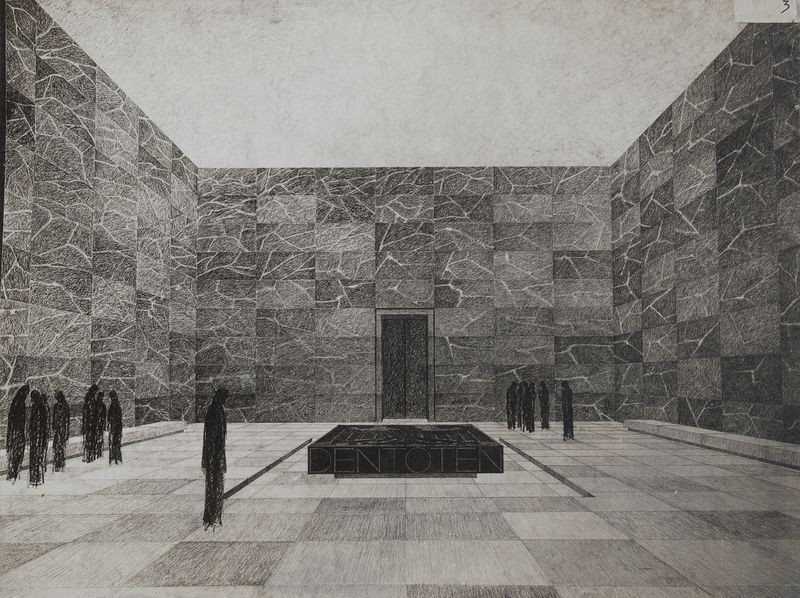Architectural Images and Memory Patterns
Mies was a form inventor, but even more than pure form, he explored the relationship between space and spirit. His monument projects are seminal designs, whether destroyed, never built, or preserved only as images. Near Bingen in 1910, Mies designed a pillared hall that encompasses an open space. His monument rises above vineyards as a memorial to the German overfather Bismarck. Schinkel's design for the Orianda Castle in the Crimea greets us from afar. Here, the "monument as palace" dominates the Rhine.
In the spring of 1926, Mies designed a block for Karl Liebknecht and Rosa Luxemburg. No room, no shell, instead a sculpture of brick blocks jutting back and forth in a garden landscape. He elevates the revolutionary monument to an abstract lectern from which the survivors honor the dead while pointing to the revolutionary future. Between erratic monumentality and movement, Mies' rhythmic brick architecture becomes a symbol of the masses.
After the Bismarck Monument and the massive body of the Revolution Monument, Mies designed an "empty space" in 1930. Within the Schinkelian walls of the Neue Wache, Mies creates a silent space of remembrance. Architecture and commemoration come together in front of bare walls, drawing the eye to the ancient cella, with its black granite victim and memorial block. Only the emptiness gives memory an abstract space. In the intermediate realm of architecture and art, Mies makes three proposals for a modern culture of remembrance. With the palace, the block and the empty space, the architect specifies spatial worlds of memory between personal and collective image-making.
